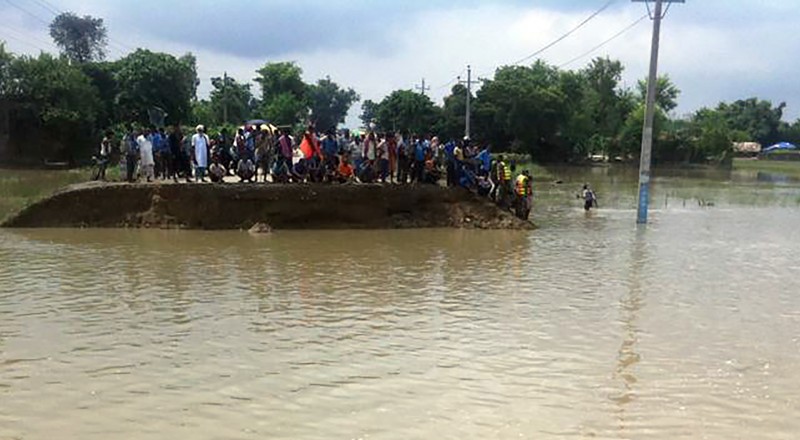Amir Aryal is the IT specialist at HERD shares his experience of Tarai flood
I had just landed in Kathmandu Airport and turned off the "Aeroplane mode" of my cell phone, I got call from the office and received order to move to the flood hit districts for emergency management ASAP. I was in touristic town of Sauraha in Chitawan a day ago for, MToT (Master training for the trainers) of MSNP (Multi-Sector Nutrition Programme) staff. I feel we were lucky to escape the flood of Rapti river which flows between Sauraha and Chitawan National Park.
On the late afternoon of 13 August, when I received that call I had no means to travel to flood hit area in the central Tarai. We had to go there to attend and manage a training for emergency management and for rapid assessment. The management of the office decided to send me the next day.
The rapid assessment was organized by Child Health Division, Management Division of Ministry of Health with close collaboration with UNICEF and HERD.
With some medicines, our team moved towards Sarlahi and Rautahat in the leadership of Mr. Sagar Ghimire from the Management Division. We reached Sarlahi on the same day. Malangwa, the district headquarter was completely flooded. We could see water everywhere. Somehow we managed to conduct a meeting with the involvement of local staff of HERD, Epidemiology and Disease Control Division, District Public Heath Office, Integrated Management of Acute Malnutrition and other agencies.
We then distributed the medicines in the affected areas. Nutrition cluster (a cluster or group formed for the analysis and support of flood hit areas) was activated and sent to the affected areas. In Malangwa, people were frightened as their houses were affected by the flood. Food and medicine provided wasn’t enough for everyone. They were waiting for government to provide relief material so they could feed their children. There was shortage of drinking water and the victims had no knowledge about the proper use of chlorine tablets and water purifiers, which was a big challenge.
Compared to rural area, the condition was a little better in Malangwa, but the ground floor of the most of the government offices were filled with water which damaged almost all the valuable documents. Rapid assessment was done to find out the number of flood victims and their health condition. Along with the rapid assessment team from Kathmandu, the district team attended District Disaster Relief Committee (DDRC) meeting organized by District Health Office and facilitated the team accordingly.
Nepal Army, helping people reach their destinations as the road linkin Chandranigapur and Gaur was washed away
On 15th August, the team reached Rauthaut. The road linking Chandarnighapur (a small town in east-west highway) and Gaur (the district headquarter), was washed away. We travelled through flooded roads and despite of challenges, we reached Gaur in 2.5 hours from East-West highway. Normally it is an hour’s drive. Upon our arrival, an emergency meeting was called on, where all the concerned agencies including government agencies and NGOs participated.
The condition in Rautahat was bad as the water level was up to 9 feet. Not only the huts but multi storied concrete houses were also affected. All the belongings including food, clothes and necessary documents were damaged. The emergency food supply stored in the government office along with the important documents were damaged. The shopkeepers were seen trying to dry the materials including medicines and electronic products they had put on sale as all these goods were badly affected.
Gaur was filled with more than 2 feet water level even after 2 days of flood. The smell of decomposing dead animals was increasing. Warnings had been issued for high chances of spreading disease. We saw hundreds of people residing under the tent as their houses were washed away. They didn’t have any belongings; just some dry foods provided as the relief materials. They were waiting for the relief, and staring at the road hoping that the government and concerned agencies will come soon with help. This was a very heartbreaking experience watching people in such a misery. But the most tragic was, lack of preparedness among the agencies.



Comments(0)
No comments found.